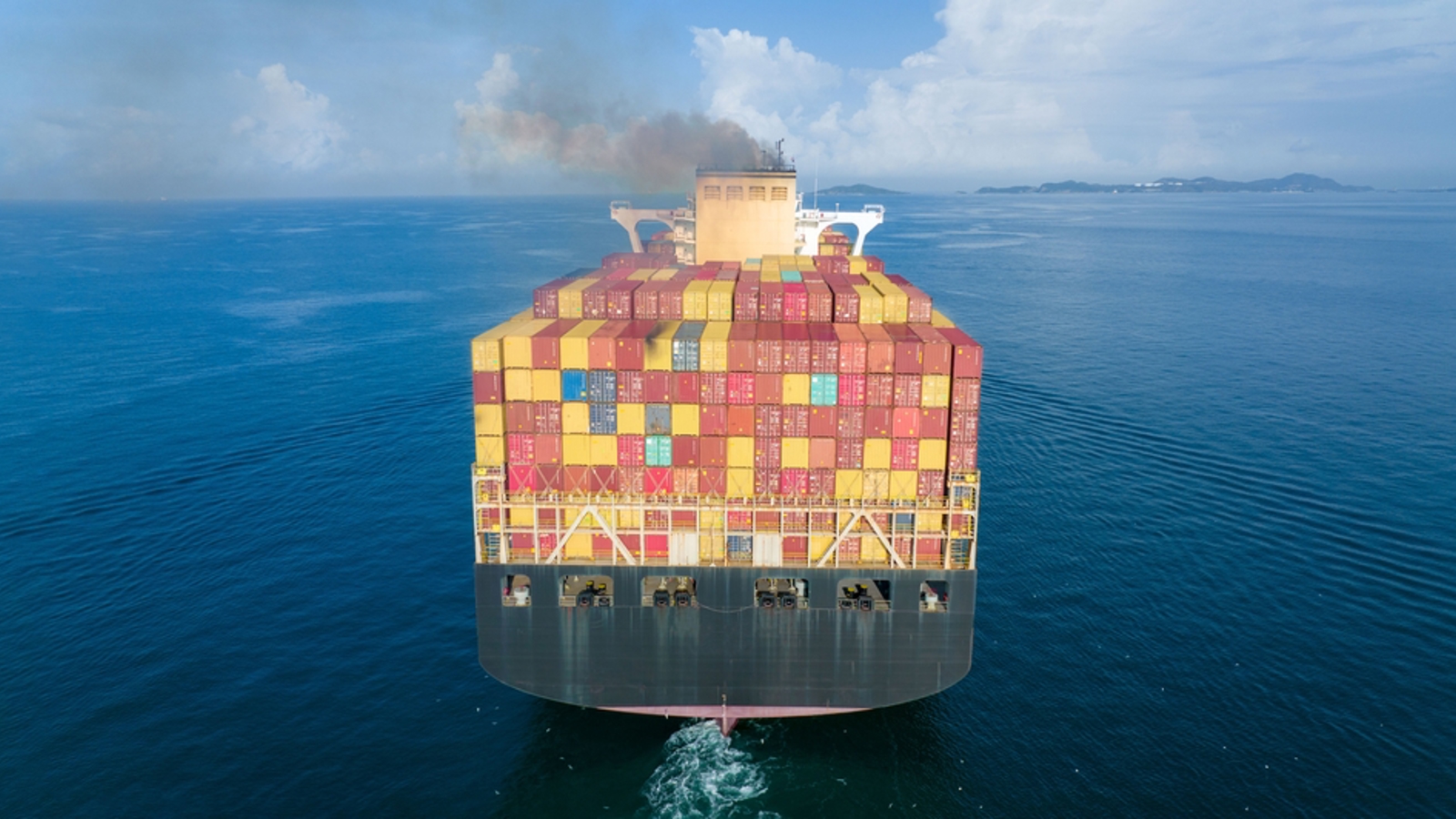Fuel oil treatment offers benefits to enhance vessel operational efficiency on road to decarbonization

Wilhelmsen insights
|
Jonas Östlund, Head of Product Management - Energy Solutions

While the EEXI is a one-off design-focused protocol granting a ticket to trade for existing ships, the CII as a measure of operational energy efficiency is the primary mechanism to reduce emissions going forward. Based on Annual Efficiency Ratio (AER) results, vessels will be awarded CII ratings ranging from A to E. The calculation essentially divides annual Fuel Oil Consumption (FOC) by distance travelled, taking into account the CO2 factor of the fuel used (100% in the case of fossil fuel oils), as well as the capacity of the vessel and correction factor – which the IMO is likely to adjust on an ongoing basis to improve accuracy. All ships will be required to keep a verified Ship Operational Carbon Intensity Plan (SEEMP Part III) on board laying out the owner/operator’s plan to improve its CII rating over the following three years.
The perils of poor scores
As emissions data becomes more widely available and public interest in the lifetime carbon footprint (including marine transport) of products increases, CII ratings could potentially become a key criterion in ship chartering. A poor rating may impact vessels’ attractiveness, which is bad for business and a reputational risk. Meanwhile, alongside the Sea Cargo Charter promoting greener shipping, banks are also encouraging decarbonisation through the Poseidon Principles. With emissions increasingly factored into lending decisions, poor vessel scores could very well become a hindrance in the quest for cash and, in line with ESG reporting requirements, even affect investor confidence in listed companies with poor-performing assets. Marine insurers’ own Poseidon Principles could also negatively impact insurance terms.
These are important commercial pitfalls given that a significant proportion of existing ships are projected to have a CII rating of C or below. According to a study posted by the Korean Register in 2021, they noted this applies to over 75% of the total 854 vessels on its books – and that’s just one shipping register. So, owners should be looking to take immediate remedial action.
How is the market responding?
Market players looking to reduce emissions in the short term without requiring expensive retrofitting of main engines are responding mainly by slow steaming. Some are adopting standalone fuels like methanol, with the use of drop-in biofuels also projected to grow. However, given current limited availability of biofuels, slow and super-slow steaming remain the most economical strategy. Slow steaming suits some vessels better – for example, container ships on fixed trades where sailing times can be optimized to match just-in-time logistics – while not all can viably adopt slow steaming, like ferries on fixed schedules. This is spurring a new generation of ships with hybrid-electric or dual-fuel propulsion.
Upside of slow steaming
The major operational benefit of slow steaming is reduced fuel consumption and, when fuel prices are high, reduced fuel spend. Jonas Ostlund, Product Manager for Oil Solutions, gives an example, “For a containership sailing a long-haul route of 3,200 km, reducing average speed from 16 knots to 14 knots would sacrifice only around a day, but capture over USD 80,000 in fuel savings (as well as 380 tons of CO2). Lube oil consumption is also reduced due to lower load on the engine. In terms of physical asset benefits, slow steaming reduces vibration and wear and tear on the hull especially in heavy seas.”
From a societal perspective, using less fuel reduces emissions of CO2 and other pollutants per voyage. Reduced lube oil usage also means less emissions of particulate matter. In terms of the supply chain, slow steaming can be beneficial by adding buffer time into sailing schedules while affording extra time to optimize port calls.
Drawbacks of slow steaming
The downside of slow steaming is that longer voyages may require more ships to be added to services to maintain frequency. Longer voyages also imply higher charter fees per voyage. Longer transit times can also negatively affect supply chains with shippers having to shoulder higher costs covering goods in transit.
On the operational front, running engines at low loads can accentuate air flow problems leading to poor fuel combustion and soot formation in engine components and the exhaust gas boiler (EGB), as well as an increased risk of soot fires. The visible evidence of soot in stack smoke could be problematic especially for cruise ships. Deposits in the EGB can compromise the flow of flue gases, again reducing system efficiency and requiring more frequent cleaning – in turn requiring more time and manpower, extra water usage and increasing inherent risk. It also attacks the symptoms rather than the root cause of the problem.
In societal terms, operating main engines at below design specifications could cause lower engine temperatures and pressures, thus increasing emissions of particulate matter and other pollutants. More slow steaming in a recession will also likely lead to an increase in tonnage when markets strengthen, resulting in increased emissions overall in the medium term.
Improving operational efficiency
At WSS, we understand these operational challenges and can help customers with two key product solutions – Unitor™ FuelPower Catalyst and Unitor™ FuelPower Soot Remover Liquid.
FuelPower Catalyst helps to improve combustion while also ensuring stability and homogeneity (uniformity) of fuel when injected into the engine. Reducing soot formation helps to keep both the engine and EGB clean and running at high efficiency.
“Improving fuel combustion while keeping engines and exhaust systems clean is a cost-effective measure to minimize operational issues as the industry races to decarbonize,’ says April Teo, Business Manager, Oil & Water Solutions at Wilhelmsen Ships Services (WSS).
Blind test shows encouraging results
One WSS customer recently carried out a series of blind tests on a 139,000-dwt container ship designed to assess the performance of FuelPower Catalyst versus two competing products. FOC at g/kWh was measured on the stationary engine under ISO conditions, with and without the additives to compare their effects.
“I’m happy to say the trial showed a Fuel Oil Consumption (FOC) improvement using FuelPower Catalyst in the range of 1.5%, versus less than 1% for the competing additives. This improvement has also been mentioned by other customers.”, said Shawn Lim, Technical Sales Manager, Chemicals.
Putting this into financial perspectives, the vessel in question currently uses around 60 tons of fuel per day, which at a bunker price of $700 per ton equates to $42,000 daily. If FOC can be improved by 1.5%, the fuel cost would decrease to $630 per day ($42,000 x 0.015) or $63,000 over 100 days of operation.
Another intervention is to keep the EGB clean over time using FuelPower Soot Remover Liquid Plus. Typically applied via a dosing unit located a short distance after the turbocharger, FuelPower Soot Remover Liquid Plus significantly lowers the oxidation temperature of soot, preventing soot formed during combustion from depositing in the EGB and reducing efficiency. It works both with HSFO and VLSFO to remove deposits so intervals between cleaning can be extended. The benefits include indirect fuel savings from better air flow through the engine and better heat exchange in the EGB, as well as saving the time and effort involved in frequent cleaning, extra water use and environmentally compliant disposal of the dirty water.
Cleaning power in action
To measure the performance of FuelPower Soot Remover Liquid Plus, another WSS customer conducted a 10-month trial on a Ro-Ro vessel slow steaming on a set route between Japan, Europe and the US. At the outset, the EGB had to be cleaned every two months as a result of deposits leading to fluctuating temperature and pressure readings. Following the installation of the dosing unit, temperature and pressure remained constant throughout the trial period. The ship continued to use the product after the 10 months were up, with the EGB first requiring cleaning only after 16 months. This demonstrates the product’s excellent performance in keeping the EGB clean over time.
FuelPower Soot Remover Liquid Plus can also help to mitigate potential challenges with drop-in biofuels such as stability and microbial contamination leading to sludge formation (the risk of contamination increases with biodiesel as it provides a rich environment for bacteria).
With CII and EEXI now upon us, please reach out to our team to find out more about how this and our other solutions can help you improve the performance of your vessels and efficiency of critical on-board equipment. This matters now more than ever. We look forward to hearing from you.